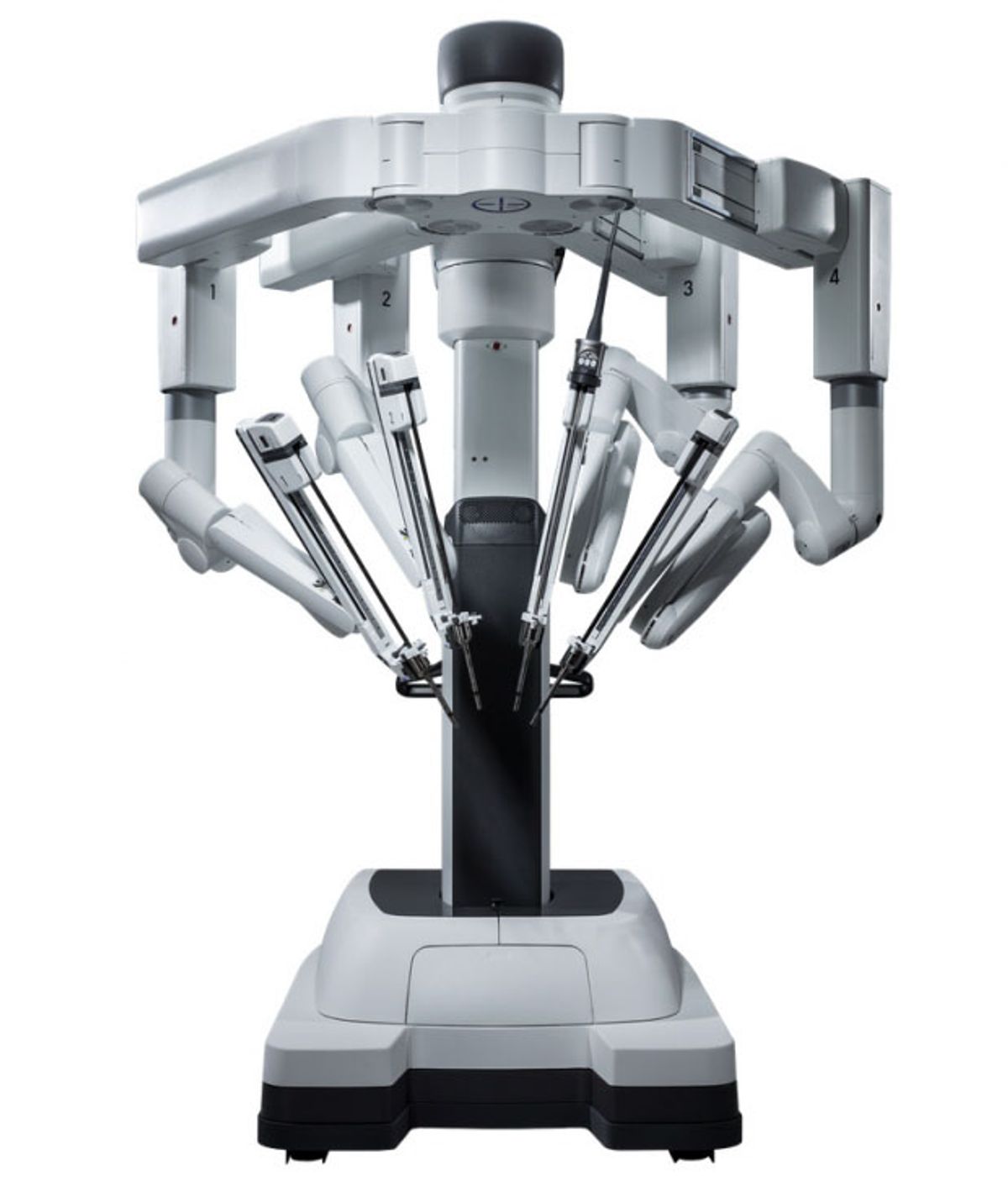Intuitive Surgical's da Vinci series of surgical robots have been conducting FDA-approved minimally invasive surgery on humans for well over a decade now, and the company is continually trying to make its robots better at performing operations with the absolute minimum of cuttingyouopenness. Last week, Intuitive released a fancy new version of the da Vinci robot, the Xi, which it says has more capabilities than previous models and is optimized for complex procedures.
A quick reminder if you're not familiar with the da Vinci: It's not an automated surgical system. Rather, it's remote controlled by a human surgeon. The word "remote" might be a bit misleading, though: while the system is capable of being operated from just about anywhere, it's most common to have the surgeon sitting right next to it, in the operating room with the patient. The benefit of the da Vinci system isn't really the potential for remote access; instead, it's that the surgeon can use tiny robotic tools that mean a much smaller incision, along with visual enhancements like infrared imaging that provide valuable information than their eyes might not.
In case you didn't catch all that, here's the rundown on what's new and improved in the Xi:
- A new overhead instrument arm architecture designed to facilitate anatomical access from virtually any position.
- A new endoscope digital architecture that creates a simpler, more compact design with improved visual definition and clarity.
- An ability to attach the endoscope to any arm, providing flexibility for visualizing the surgical site.
- Smaller, thinner arms with newly designed joints that offer a greater range of motion than ever before.
- Longer instrument shafts designed to give surgeons greater operative reach.
In addition, the da Vinci Xi System is built to be compatible with Intuitive Surgical's Firefly Fluorescence Imaging System. While it is not currently available, we plan to seek regulatory clearance for use of Firefly Imaging with the da Vinci Xi System. This technology is currently available as an option with the da Vinci Si model, and it is used to provide the surgeon with additional visual information in a variety of surgical procedures by enabling real-time visualization and assessment of vessels, bile ducts and tissue perfusion.
That last bit in there is a good example of one of the benefits of using a robot for surgery: you can add a bit of augmented reality into the mix to make the job of the surgeon significantly easier by providing information overlaid on the important bits of the patient directly, instead of having to glance back and forth at images while you try not to poke the wrong squishy thing.
Still, we should point out that the benefits of robotic assisted surgeries are still open to debate: they are minimally invasive, but the systems are expensive, making the surgeries more expensive, and the overall benefit to the patient is not always certain.
However, a UCLA study from February of this year did find that "prostate cancer patients who undergo robotic-assisted prostate surgery have fewer instances of cancer cells at the edge of their surgical specimen and less need for additional cancer treatments like hormone or radiation therapy than patients who have traditional 'open' surgery."
This is the sort of study that we need more of, especially as surgical robots get more advanced: the technology that da Vinci systems represent is very impressive, but it's important to know that it's definitely worth using before our healthcare system invests in it.
[ da Vinci Xi ]
Evan Ackerman is a senior editor at IEEE Spectrum. Since 2007, he has written over 6,000 articles on robotics and technology. He has a degree in Martian geology and is excellent at playing bagpipes.



